#Trolling Motor Battery
Text
What is the LiFePO4 Battery?

Lithium ion batteries, in essence, are those that charge by moving ions between the negative and the positive sides. Lithium ions are the small red dots that appear inside the battery. They are known to move backwards and forwards to keep the system operating. We'll be exploring the workings of a LiFePO4 Battery in detail in this article. You can read on to learn more.
The left side contains a positive electrode made from LiFePO4. The full form is lithium-iron-phosphate. Additionally, iron ions and phosphate create a grid that traps ions.
Charging the Battery
The lithium ions are transferred from one electrode to the other during charging. This membrane is made with a specific kind of plastic called polymer. It has many tiny pores, making it easier for the ions of ions to pass through. The negative side of the lattice is composed of carbon atoms. They are capable of trapping ions and keeping them from moving to the other side.
Discharge the Battery
The battery does the exact same thing as when it is discharged, but in reverse. The lithium ions are made to move again when electrons flow over the negative electrode. They move through the membrane and return to the substance called iron-phosphate lactice. As long as the battery remains charged, they will be stored on the other end.
Movement of the Ions
Pay attention and you'll see that lithium ions are stored on the positive side, also known as an electrode. If the battery is fully charged, the lithium ions will be stored in the negative electrode carbon.
Construction Method
You should know that these units are made of thin layers copper foils, aluminum and polymer. The chemicals are layered on top of the layers. In most cases they are rolled as a jelly-roll, and stored in a canister of steel. The process is identical to that of an AA-battery.
Replace
This is how 12 volts lithium ion batteries are used in different devices. They get their power from a lot these cells. They can be connected in parallel and in series to increase their amp-hour capacities and voltage. Each cell can produce 3.3 volts. This means that if four of these cells are connected in series you will get 13.2 V total. These battery packs can be used to replace a 12V battery pack.
You can read this article to learn how a LiFePO4 cell works. These batteries can be purchased by custom-made ones. This article will hopefully help you understand the units.
0 notes
Text
Learn Some Hidden Facts About The Lithium RV Battery
In fields reliant on sturdy machinery and journeys into uncharted territories, the choice of battery technology holds significant sway over effectiveness and convenience. Are you someone willing to know more facts about the forklift lithium battery? If Yes. This writing piece is the best place where people can know more about it.
Forklift Lithium Battery
Within industrial landscapes where operational efficiency reigns supreme, forklifts stand as indispensable assets. While traditional lead-acid batteries have been prevalent, the introduction of forklift lithium battery has revolutionized operations.
Forklift lithium battery deliver steady power output throughout work shifts, devoid of the voltage fluctuations seen in lead-acid batteries. This ensures uninterrupted operations, maximizing productivity. In contrast to lead-acid batteries, which require prolonged recharging intervals, lithium batteries can be swiftly recharged during breaks or shift changes, minimizing downtime and streamlining workflow.
Lithium RV battery flaunts a prolonged service life as compared to their lead-acid counterparts, lessening the requirement for frequent replacements and reducing the overall cost of ownership. For adventurers seeking freedom on the open road, reliable power is paramount. The lithium RV battery is popular for many hidden reasons. It is known for its durability and effortless features that you must explore.
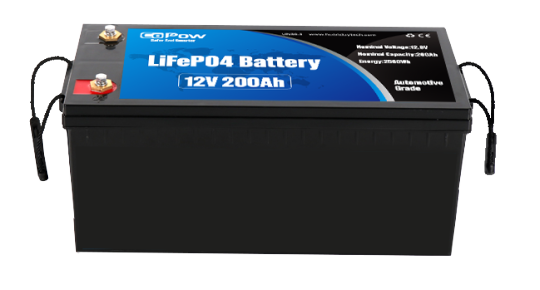
Lithium RV battery provide greater energy density than traditional lead-acid batteries, delivering more power in a smaller, lighter package. Lithium RV batteries boast a longer lifespan than lead-acid batteries, lasting up to ten times longer with proper care. This translates to fewer battery replacements and greater confidence during extended journeys.
Lithium batteries can be charged rapidly using compatible chargers, allowing RVers to spend less time waiting and more time exploring their surroundings. Whether in industrial environments or on recreational excursions, lithium batteries offer unparalleled performance, efficiency, and convenience. With advancing technology, the adoption of lithium batteries for forklifts and RVs is poised to increase, ushering in a new era of reliability and power.
0 notes
Text
The Power of 12V 50Ah LiFePO4 Batteries: Energy for the Future
In today's world, energy storage solutions are becoming increasingly vital as we strive for sustainability and energy independence. One technology that has emerged as a frontrunner in this field is the 12v 50ah lifepo4 battery. This article explores the remarkable potential of LiFePO4 batteries, focusing on their technical specifications, applications, and the environmental benefits they offer.
Understanding LiFePO4 Batteries
LiFePO4, which stands for Lithium Iron Phosphate, is a type of lithium-ion battery known for its exceptional energy density and safety features. LiFePO4 batteries are composed of lithium iron phosphate as the cathode material, making them a superior choice for a range of applications. The 12V 50Ah LiFePO4 battery represents a specific configuration with a voltage of 12 volts and a capacity of 50 ampere-hours.
Technical Advantages
High Energy Density: LiFePO4 batteries are known for their high energy density, meaning they can store a substantial amount of energy in a compact and lightweight design. This is particularly important for applications where space is limited.
Long Cycle Life: LiFePO4 batteries have a significantly longer cycle life compared to other lithium-ion batteries, often exceeding 2000 charge-discharge cycles. This makes them a cost-effective and sustainable choice for long-term applications.
Fast Charging: LiFePO4 batteries can be charged at higher rates, making them suitable for applications that require rapid replenishment of energy.
Safety: LiFePO4 batteries are considered one of the safest lithium-ion battery chemistries. They are highly resistant to overheating and are less prone to thermal runaway, which can result in fires or explosions in other lithium-ion batteries.
Applications
Solar Power Storage: 12V 50Ah LiFePO4 batteries are frequently used in solar energy systems for residential and commercial applications. They can store excess solar energy during the day for use during the night or when sunlight is unavailable.
Electric Vehicles: LiFePO4 batteries are gaining traction in the electric vehicle (EV) industry. Their high energy density, long cycle life, and safety features make them a reliable choice for powering electric cars, bikes, and scooters.
Off-Grid Systems: Remote and off-grid locations often rely on LiFePO4 batteries for energy storage. These batteries can power telecommunications equipment, remote monitoring systems, and remote cabins, ensuring a consistent power supply.
Marine and RV Applications: 12V 50Ah LiFePO4 batteries are suitable for marine and RV applications due to their lightweight design and resistance to vibration and shock.
Emergency Backup Power: LiFePO4 batteries provide reliable backup power for critical systems, such as data centers, hospitals, and emergency lighting, ensuring uninterrupted operation during power outages.
Environmental Benefits
LiFePO4 batteries offer several environmental benefits:
Reduced Carbon Footprint: LiFePO4 batteries are energy-efficient and produce lower emissions during their lifecycle, contributing to a reduction in the carbon footprint.
Longer Lifespan: The extended cycle life of LiFePO4 batteries means fewer replacements and reduced waste, promoting sustainability.
Recyclability: LiFePO4 batteries are recyclable, allowing for the recovery of valuable materials and the reduction of electronic waste.
The 12V 50Ah LiFePO4 battery represents a powerful and sustainable energy storage solution with a wide range of applications. Its technical advantages, including high energy density, long cycle life, and safety features, make it a compelling choice for various industries and environments. Additionally, its positive environmental impact, from reduced emissions to recyclability, aligns with the global push for sustainable energy solutions. As we continue to pursue a greener and more energy-efficient future, LiFePO4 batteries are poised to play a pivotal role in powering our world.
For more details, visit us :
12v 50ah lithium battery for trolling motor
Lithium RV Batteries for home
SAE extension cable
lifepo4 battery 12v 100ah
0 notes
Text
How Long Will a 35Ah Battery Run a Trolling Motor?
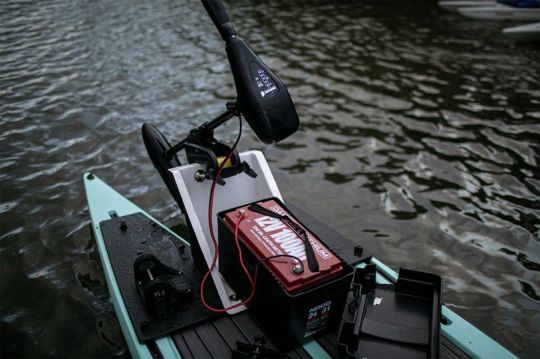
Trolling motors are the unsung heroes of every angler's boat, providing quiet and efficient propulsion for a day on the water. If you're a passionate fisherman, you know that the performance of your trolling motor heavily relies on the battery powering it. In this article, we'll dive deep into the world of trolling motor batteries, focusing on the 35Ah battery's capabilities and its endurance on the water.
As any seasoned angler will tell you, the longevity of your fishing expedition often hinges on the quality and capacity of your trolling motor battery. In this comprehensive guide, we'll explore the factors that determine how long a 35Ah battery can run a trolling motor.
Arrangement Trolling Motors
Before delving into battery specifics, it's essential to grasp the fundamentals of trolling motors. These devices are electric or battery-powered and serve as auxiliary propulsion for boats, allowing anglers to move quietly and efficiently through the water. Trolling motors are indispensable for precise positioning and maneuvering while fishing.
Types of Trolling Motor Batteries
When it comes to powering your trolling motor, you have two primary options: lead-acid and lithium-ion batteries. Each has its pros and cons, and the choice greatly affects your motor's performance.
The Power of a 35Ah Battery
A 35Ah battery refers to a 35 Ampere-hour battery, which signifies its capacity to supply a consistent current of 1 Ampere for 35 hours. But how does this capacity translate to trolling motor use, and is it sufficient for your needs?
Factors Affecting Battery Run Time
To determine how long a 35Ah battery can run a trolling motor, you need to consider various factors, such as the motor's thrust, speed settings, and voltage requirements.
Dakota Lithium Batteries
Dakota Lithium batteries have gained a reputation for their exceptional performance in the fishing world. We'll explore how these batteries have become a game-changer for anglers.
Deep Cycle Batteries
Deep cycle batteries are often the preferred choice for trolling motors due to their ability to withstand repeated charging and discharging cycles. We'll discuss why they are ideal for this purpose.
Choosing the Right Battery
Selecting the right battery for your trolling motor is crucial. Compatibility with your motor and proper maintenance play a significant role in battery life.
Calculating Battery Run Time
Understanding how to calculate battery run-time based on Ampere-hours is essential for planning your fishing trips effectively.
Practical Tips for Prolonging Battery Life
We'll provide you with practical tips on how to extend the life of your trolling motor battery, including proper charging and storage techniques.
Real-World Scenarios
We'll examine real-world case studies and examples to give you a practical understanding of how long a 35Ah battery can run a trolling motor in different situations.
The 12V Battery Dilemma
Is a 35Ah battery enough for your trolling motor, especially if it requires a 12V power source? We'll address this common dilemma and provide insights.
Bursting the Myths
There are several misconceptions and myths surrounding trolling motor batteries. We'll debunk some of these to ensure you have accurate information.
Pros and Cons
Weighing the pros and cons of various trolling motor battery options, including 35Ah batteries, will help you make an informed decision.
Conclusion
In conclusion, the longevity of a 35Ah battery's performance on a trolling motor depends on several factors. By understanding these factors and making informed choices, you can ensure a long and productive day on the water.
FAQs
Can I use a 35Ah battery for my 12V trolling motor?
We address this common question in detail in this article, so be sure to check it out.
How do Dakota Lithium batteries differ from traditional ones?
We explore the unique features of Dakota Lithium batteries and their advantages.
What should I do to maintain my trolling motor battery?
We offer practical tips for maintaining your battery's health and performance.
Can a 35Ah battery run a trolling motor at top speed?
We'll discuss the impact of speed settings on battery run time.
Are there any specific brands known for their high-quality trolling motor batteries?
We'll mention some reputable brands in the article helping you make an informed choice.
0 notes
Text
The Pros and Cons of Using Lifepo4 Batteries for Your Trolling Motor
Are you looking for a battery for your trolling motor? If so, you may wonder if a Lifepo4 battery is a good option. Here, we'll look at the pros and cons of using Lifepo4 batteries for trolling motors.
The Pros and Cons of Using Lifepo4 Batteries for Your Trolling Motor
The Pros and Cons of Using lifepo4 battery for Your Trolling Motor
When it comes to trolling motors, you can choose from a few different battery types. One of the newer options on the market is the Lifepo4 battery. In this article, we will look at the pros and cons of using Lifepo4 batteries for your trolling motor.
Lifepo4 batteries are a type of lithium-ion battery. They're becoming increasingly popular in various applications, including trolling motors. Lifepo4 batteries offer several advantages over other battery types, including:
1. They're lightweight.
2. They have a high energy density, meaning they can store more energy than other battery types.
3. They have a low self-discharge rate, meaning they lose less charge when unused.
4. They're environmentally friendly.
5. They have a long lifespan.
There are a few disadvantages to using Lifepo4 batteries, including:
1. They're more expensive than other battery types.
2. They require a special charger.
3. They're sensitive to temperature extremes.
4. They can be damaged if not used properly.
Overall, Lifepo4 batteries have a lot to offer. They're lightweight, high energy density, and environmentally friendly. However, they're also more expensive than other battery types and require a special charger.
The Pros of Using Lifepo4 Batteries for Your Trolling Motor
Are you in the market for a new trolling motor battery? If so, you may wonder if a Lifepo4 battery is the right choice. In this blog post, we'll look at the pros and cons of using a Lifepo4 battery for your trolling motor.
One of the biggest advantages of using a Lifepo4 battery is that it offers a longer lifespan than other types of batteries. A Lifepo4 battery can last up to four times longer than a traditional lead-acid battery. This means that you won't have to replace your battery as often, which can save you money in the long run.
Another advantage of using a Lifepo4 battery is that it's much lighter than a lead-acid battery. This can be a big advantage if you have a smaller trolling motor, as it will be easier to carry and transport.
Finally, Lifepo4 batteries are much more efficient than lead-acid batteries. This means that they'll be able to provide more power for longer periods of time.
Of course, there are also some disadvantages to using a Lifepo4 battery. One of the biggest is that they're more expensive than lead-acid batteries. However, if you take into account the fact that you'll be replacing your battery less often, the overall cost may be worth it.
Another disadvantage of using a Lifepo4 battery is that it requires special chargers. This can be an inconvenience, but it's something that you'll need to consider if you're planning on using this type of battery.
Overall, there are many advantages to using a Lifepo4 battery for your trolling motor. If you're looking for a battery that will last longer and be more efficient, a Lifepo4 may be the right choice for you.
The Cons of Using Lifepo4 Batteries for Your Trolling Motor
If you're thinking about using a Lifepo4 battery for your trolling motor, there are a few things you should know. Here are three potential cons of using these types of batteries:
1. They're More Expensive
Lifepo4 batteries are typically more expensive than traditional lead-acid batteries. This is because they're made with more expensive materials and have a longer lifespan. If you're on a budget, you may want to stick with a lead-acid battery.
2. They weigh more.
Lifepo4 batteries are also typically heavier than lead-acid batteries. This can be a problem if you're trying to save weight on your boat. If weight is not an issue, then this probably won't be a big deal to you.
3. They Require Special Chargers
You can't just use any old charger with a Lifepo4 battery. You need to make sure you're using a charger that's specifically designed for these types of batteries. Otherwise, you could damage the battery.
Overall, Lifepo4 golf cart batteries for sale have some potential drawbacks. However, they also offer some significant advantages. If you're considering using one for your trolling motor, weigh the pros and cons carefully to decide if it's the right choice for you.
The Bottom Line: Should You Use Lifepo4 Batteries for Your Trolling Motor?
If you're like most people, you've probably heard of lithium-ion batteries, but you may not be familiar with lithium iron phosphate batteries, also known as Lifepo4 batteries. These batteries are becoming increasingly popular in a variety of applications, including trolling motors. But what are the pros and cons of using these batteries for your trolling motor? Let's take a closer look. Lifepo4 batteries have a number of advantages over traditional lead-acid batteries. They are much lighter, so they are easier to transport and install. They also have a higher energy density, meaning they can store more power in a given space. And they have a longer lifespan, typically lasting up to twice as long as lead-acid batteries.
On the downside, Lifepo4 batteries are more expensive than lead-acid batteries. But, when you factor in the longer lifespan and increased performance, they may be worth the investment. So, should you use a Lifepo4 battery for your trolling motor? If you're looking for a lighter-weight, longer-lasting battery with increased performance, then the answer is probably yes. Just be prepared to spend a bit more upfront.
Conclusion
The trolling motor is a device that is used to propel a boat through the water. It is usually attached to the stern of the boat and is operated by a remote control. The trolling motor can be used to move the boat in any direction and can also be used to stop the boat. Most trolling motors are powered by lead-acid batteries, but some newer models are powered by lithium-ion batteries. Lithium-ion batteries are more expensive than lead-acid batteries, but they have several advantages. Lithium-ion batteries are lighter and more powerful, and they can be recharged more quickly. There are some disadvantages to using lithium-ion batteries, however. They can be damaged by overcharging, and they can catch fire if they are damaged. Lead-acid batteries are more durable and less likely to catch fire, but they are heavier and less powerful. If you are considering using a lithium-ion battery to power your trolling motor, you should weigh the pros and cons carefully. Lithium-ion batteries have some advantages, but they also have some significant disadvantages.
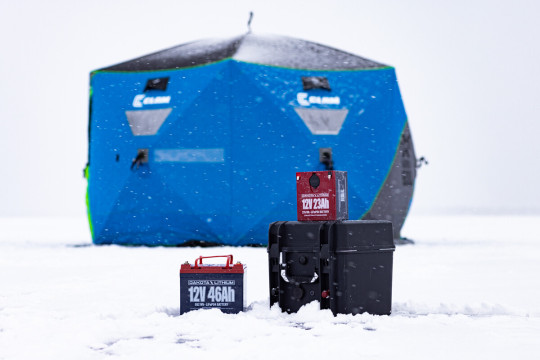
#lifepo4 battery#dakota lithium#marine battery#trolling motor#12v battery#battle born batteries#10 box
0 notes
Text
Lithium trolling motor batteries cost thousands of dollars. Read this blog before you make that purchase!
0 notes
Text
How to Choose The Best Trolling Motor Battery?
youtube
Trolling motors are used in jet skis and boats and are completely different from car batteries. There are so many contrasting trolling batteries in the marketplace. They are all different from each other, with benefits and demerits. Some anglers put car batteries in their boats which results in the devastation of batteries and motors. So installing the best trolling motor battery in boats and ski jets is the first priority of every angler.
0 notes
Text
I had to run a LOT of wire on this one. I installed a front and rear anchor winch, trolling motor, fish finder and relocated the batteries on a 28 foot tritoon with aluminum panels covering the bottom. All this is done right, I fabricated mounts for the bottom of the anchor winches






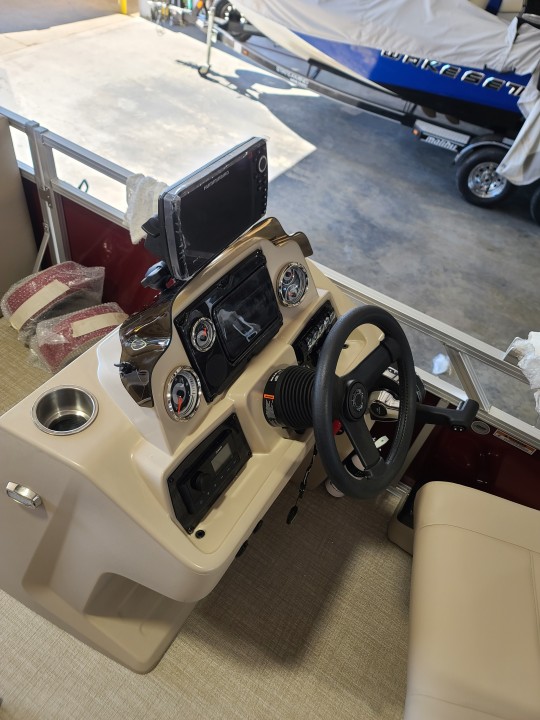
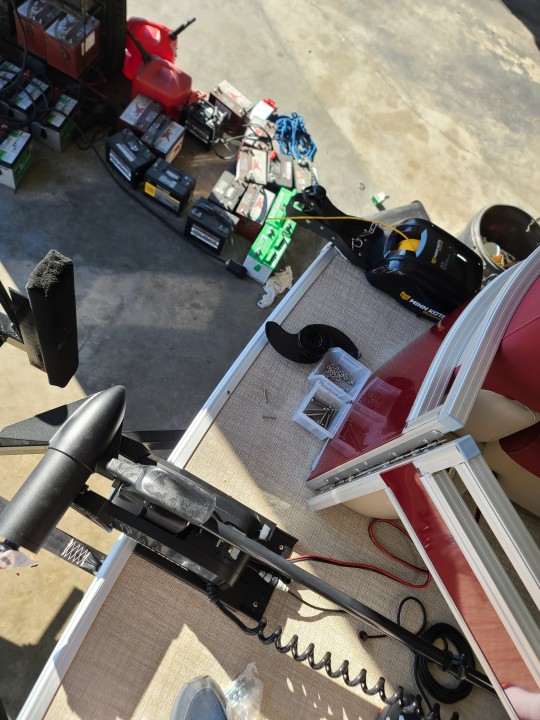
20 notes
·
View notes
Text
What is a deep cycle battery plus answers to your boat battery questions
As long as it looks like it’s doing its job, you probably don’t care much about your boat battery. In fact, many boat owners just use the original batteries that came along with their boat.
But what if your battery needs to be replaced? Or, what if you were buying your first boat? Do You Need Deep Cycle Marine Batteries? (yes!) Or would a starter battery do the trick? (Too!) Time to get to the boat batteries…and we’re here to help.
As technology advances, more and better batteries become available. But like a 10-page menu, more options make things more confusing. Might be more difficult to choose!
Marine batteries come in a variety of chemistry, sizes and uses. Before making a decision, it’s better to know what is a deep cycle marine battery, how does it works, and which is best.
First of all, we provide a short, less technical explanation of the most common terms on the boat battery:
Boat Battery Terms
Think of this basic term as “appetizer”. Familiarity with the battery vocabulary will help you to figure out the confusing specifications and jargon you may come across while shopping.
Amp Hour (AH)
This refers to the amount of energy your boat’s batteries can store. The larger the AH number, the larger the capacity.
Cycle
One cycle is a full discharge and a full charge. Deep cycle batteries usually have a cycle life or cycle rating. This rating indicates the number of cycles you can discharge and recharge the battery before it reaches 80% of its original capacity. At that point, most batteries will need to be replaced.
C rate (or Capacity Hour Rate)
It is actually a measurement of rate at which the battery be charged or discharged. You can also say it is the ratio between current draw, battery capacity and time. Most deep cycle marine batteries follow a standard 20 hour rate. The number “20” means discharge within 20 hours. For example, a battery with a capacity of 100AH and a rating of C20 can deliver 5 amps for 20 hours before being discharged.
Depth of Discharge (DOD)
This is the amount of your battery’s total capacity that you drain before recharging. For example, if your battery has reached 60% DOD, it means that you have 40% capacity left. A battery with a capacity of 100AH would have 60% DOD if you drained it to 40AH.
This is the total capacity of the battery that drain before recharging. For example, if your battery has reached 60% DOD, it means you have 40% capacity left only. If you drain a 100AH battery down to 40AH, it stands for 60% DOD.
Internal resistance
The term refers to the ability of a battery to resist energy as it is charged and discharged. The lower the internal resistance, the better. Batteries with higher internal resistance don’t charge as efficiently and can get hotter while charging because the energy lost is converted to heat.
State of Charge (SOC)
This is how much capacity your battery could be charged in. For example, a fully charged battery has a state of charge (SOC) of 100%.
What is a Deep Cycle Marine Battery?
Now for the main course: What is a deep cycle marine battery?This type of battery support you to power the trolling motor, radio, GPS, fish finder, and other gadgets on your boat (as well as RV parts, but that’s another topic). It is different from a starter battery or cranking battery, which we will discuss more below.
Deep cycle marine batteries can withstand multiple charges and discharges. That’s why (in most battery types) it has thick and heavy plates. It can survive rigorous charging and hundreds of cycles.
Like the tortoise in the old fable “The Tortoise and the Hare,” you might think of a deep cycle battery as a “slow and steady” power source. Their instantaneous power is limited. That’s why you can’t use them to start your motor. For this, you’ll need a starter/starter battery, which we discuss below.
5 notes
·
View notes
Text
How much do you know about 12v 100ah lifepo4 deep cycle battery?
Deep cycle 12V 100ah Lifepo4 lithium battery for RV/solar system/yacht/golf cart storage and car.
APPLICATIONS - This product is suitable for trolling motors, solar power, RVs, golf carts, low boats, off grid applications, home appliances, boats, caravans, medical equipment, electric scooters, industrial, hunting, gardens and gardens, etc.
Features - The battery has a flat discharge curve, the voltage remains above 12V, and can be used up to 90% of the charge. However, lead-acid batteries are only 50% autonomous. Therefore, compared to lead-acid batteries, lithium iron phosphate batteries undoubtedly improve the efficiency and runtime. Coupled with the light weight of lithium iron phosphate batteries, it will be the best choice for outdoor activities.
Built-in BMS - Our batteries have built-in BMS with overcharge, overdischarge, overcurrent and short circuit protection. BMS can protect the battery bay from damage. Compared to lead-acid batteries, lithium iron phosphate batteries are extremely safe and will not explode or burn. And the materials used are all environmentally friendly, no need to add acid and water. Can be installed directly.
Performance - Maximum continuous charge 12v 100ah, discharge current 100ah. The peak discharge current is 200ah within 3~5 seconds. It is important to note that the connected device cannot exceed battery power. The battery switch only controls the USB, which you can use to charge your phone or tablet or other device. The battery can be used for charging whether or not the battery switch is on.
Learn more about us: https://www.geb-battery.com/
#12V100ah lifepo4 #18650 Lithium Battery #21700 Battery #Lithium Polvmer
2 notes
·
View notes
Text
Epoch Batteries - Lithium Marine & Trolling Motor Battery
youtube
1 note
·
View note
Text
Lifepo4 Battery 12V 100ah And Its Hidden Benefits
Ready to enhance your RV adventures? Meet the lithium RV battery, specifically the LiFePO4 (Lithium Iron Phosphate) 12V 100Ah model, reshaping how we power recreational vehicles. Let's delve into why this state-of-the-art energy solution is transforming travel and camping experiences. Are you curious or want to know or learn more about impeccable and durable batteries? If Yes. This is the best writing piece where you can learn or explore more about the benefits or advantages of batteries.
Extended Lifespan
Traditional lead-acid batteries often require frequent replacements, but LiFePO4 batteries offer an impressive lifespan of over a decade, ensuring reliable power for countless journeys without the hassle of frequent changes. For RV enthusiasts aiming to optimize fuel efficiency and cargo capacity, lithium batteries are significantly lighter than lead-acid ones, reducing overall vehicle weight and improving handling.
Time efficiency matters, especially during travel. Lithium RV batteries charge much faster than conventional options, minimizing downtime and maximizing enjoyment on the road. LiFePO4 battery 12v 100ah can handle deeper discharge cycles compared to lead-acid alternatives, ensuring consistent performance and dependable power, even during prolonged off-grid adventures. Despite their compact size, lithium batteries offer remarkable energy density, providing more usable capacity within a smaller footprint, and freeing up space in the RV for other essentials.
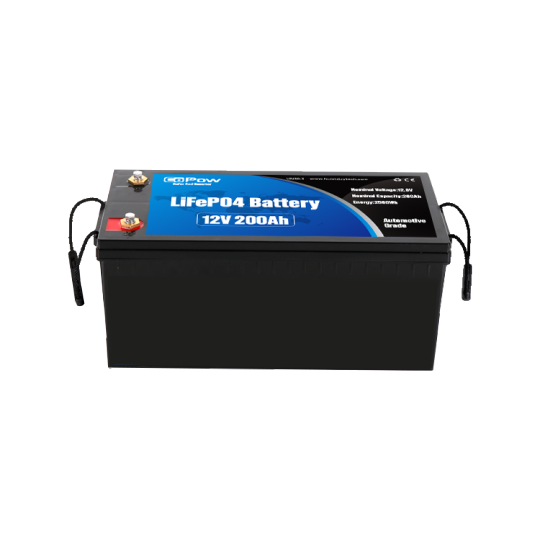
Say goodbye to regular battery upkeep. Lithium RV batteries require minimal maintenance, eliminating the need for watering, equalization charges, and other time-consuming tasks associated with traditional batteries. Whether facing extreme heat or cold, lithium RV batteries maintain consistent performance across a wide range of temperatures, ensuring reliable power delivery in any environment.
The transitioning to a lithium RV battery, particularly the LiFePO4 battery 12V 100Ah variant, brings numerous benefits that elevate the RV lifestyle. From extended lifespan and lightweight design to rapid charging and temperature resilience, these advanced batteries empower adventurers to explore further, stay longer, and embrace off-grid living with ease. Experience the future of RV power with lithium technology today.
0 notes
Text
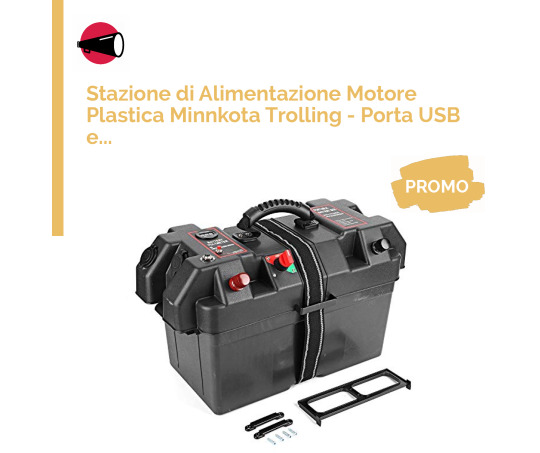
💣 Stazione di Alimentazione Motore Plastica Minnkota Trolling - Porta USB e Caricabatterie 12V
🤑 a soli 23,70€➡️ https://www.scontomio.com/coupon/stazione-di-alimentazione-motore-plastica-minnkota-trolling-porta-usb-e-caricabatterie-12v/?feed_id=226270&_unique_id=660d671868add&utm_source=Tumblr&utm_medium=social&utm_campaign=Poster&utm_term=Stazione%20di%20Alimentazione%20Motore%20Plastica%20Minnkota%20Trolling%20-%20Porta%20USB%20e%20Caricabatterie%2012V
La Scatola Batteria Auto, Stazione di Alimentazione Motore Plastica Minnkota Trolling è progettata per adattarsi a batterie del gruppo 24 e 27. Proteggi la tua batteria con facilità!
#coupon #akozon #offerteamazon #scontomio
0 notes
Text
Revolutionizing Watercraft: The Rise of Lithium Trolling Motor Batteries
Introduction:
The advent of lithium trolling motor batteries has marked a significant milestone in the evolution of recreational and professional fishing, offering unparalleled efficiency and performance on the water. These batteries provide a robust and reliable power source for trolling motors, fundamentally changing the angling experience by offering longer run times, reduced weight, and faster recharge capabilities. This article explores the benefits, applications, and key considerations of lithium trolling motor batteries, illuminating their impact on modern watercraft technology.

Benefits of Lithium Trolling Motor Batteries:
Extended Battery Life: Lithium batteries offer significantly longer life spans than traditional lead-acid batteries, ensuring years of reliable service.
Lightweight Design: They are much lighter, reducing the overall weight of the watercraft and improving maneuverability and speed.
Faster Recharge Times: With the ability to recharge much faster, anglers can spend less time waiting and more time on the water.
Consistent Power Delivery: Unlike other batteries, lithium trolling motor batteries maintain consistent power output until fully depleted, ensuring optimal performance throughout.
Eco-Friendly: With a lower environmental impact, these batteries are an excellent choice for eco-conscious anglers.
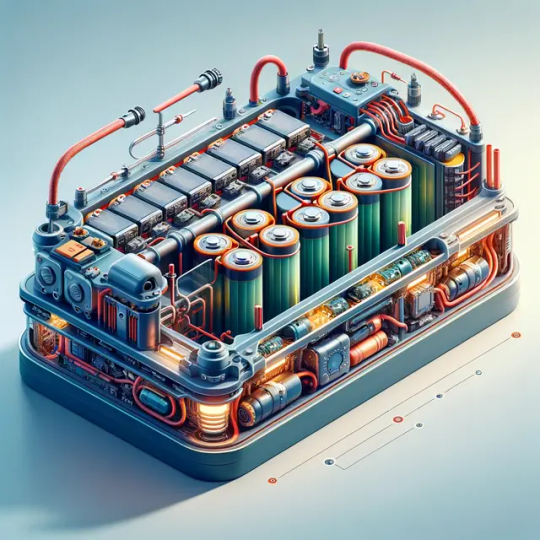
Applications of Lithium Trolling Motor Batteries:
Recreational Fishing: Ideal for small to medium-sized boats, enhancing the fishing experience with extended trips and minimal downtime.
Professional Angling: Provides the reliability and endurance needed for tournaments and long days on the water.
Kayak Fishing: Their lightweight nature makes them perfect for kayaks, offering power without compromising on space or weight.
Eco-Tours: Used in eco-friendly tours, they support sustainable practices in wildlife and nature exploration.
Choosing the Right Lithium Trolling Motor Battery:
Selecting the appropriate battery involves considering capacity, voltage, and compatibility with the trolling motor and watercraft. It's crucial to match the battery's specifications with the motor's requirements to ensure optimal performance and longevity. Additionally, investing in a quality charger designed for lithium batteries can extend their life and maintain their efficiency.
Conclusion:
Lithium trolling motor batteries are reshaping the future of fishing and boating, offering significant advantages over traditional power sources. With their lightweight design, faster charging, and longer lifespan, they provide anglers and boaters with a superior alternative that enhances their experience on the water. As technology advances, the adoption of lithium batteries in watercraft is set to grow, further revolutionizing the way we explore and interact with aquatic environments.
0 notes
Text
1 note
·
View note
Text
Mastering the Waters: Techniques and Tips from Bassmaster Pros | HugeCount
The roar of the trolling motor, the gentle hum of the fish finder, and the anticipation of a powerful tug on the line are the sounds of a booming bass fishing expedition. Whether you’re a seasoned angler or a novice just starting, mastering the waters requires skill, technique, and the right equipment. In this blog post, we’ll delve into the world of bass fishing, exploring essential techniques and tips from seasoned Bassmaster pros. We’ll also discuss the importance of trolling motors and deep cycle batteries, particularly Dakota Lithium Batteries, in powering your bass fishing adventures. Essential Techniques for Bass Fishing […]
Source: https://hugecount.com/business/mastering-the-waters-techniques-and-tips-from-bassmaster-pros/
0 notes